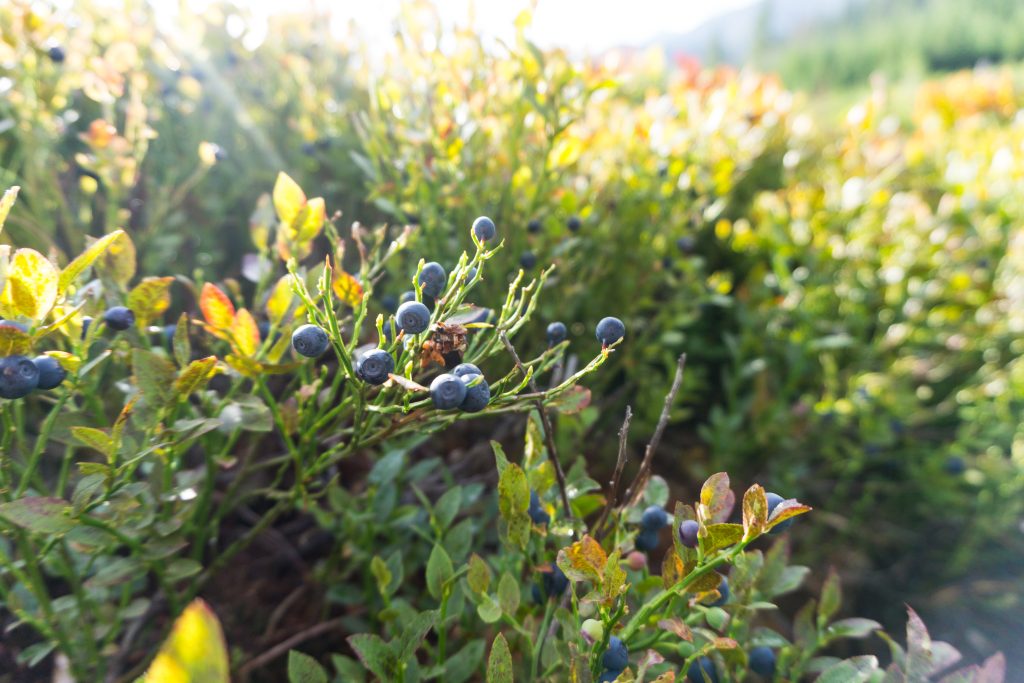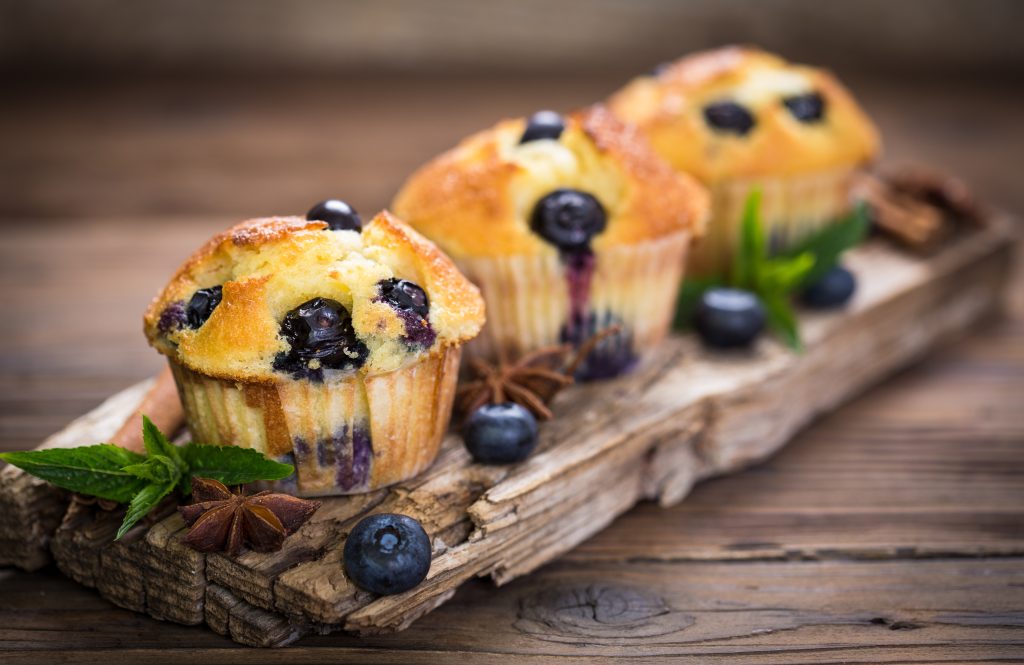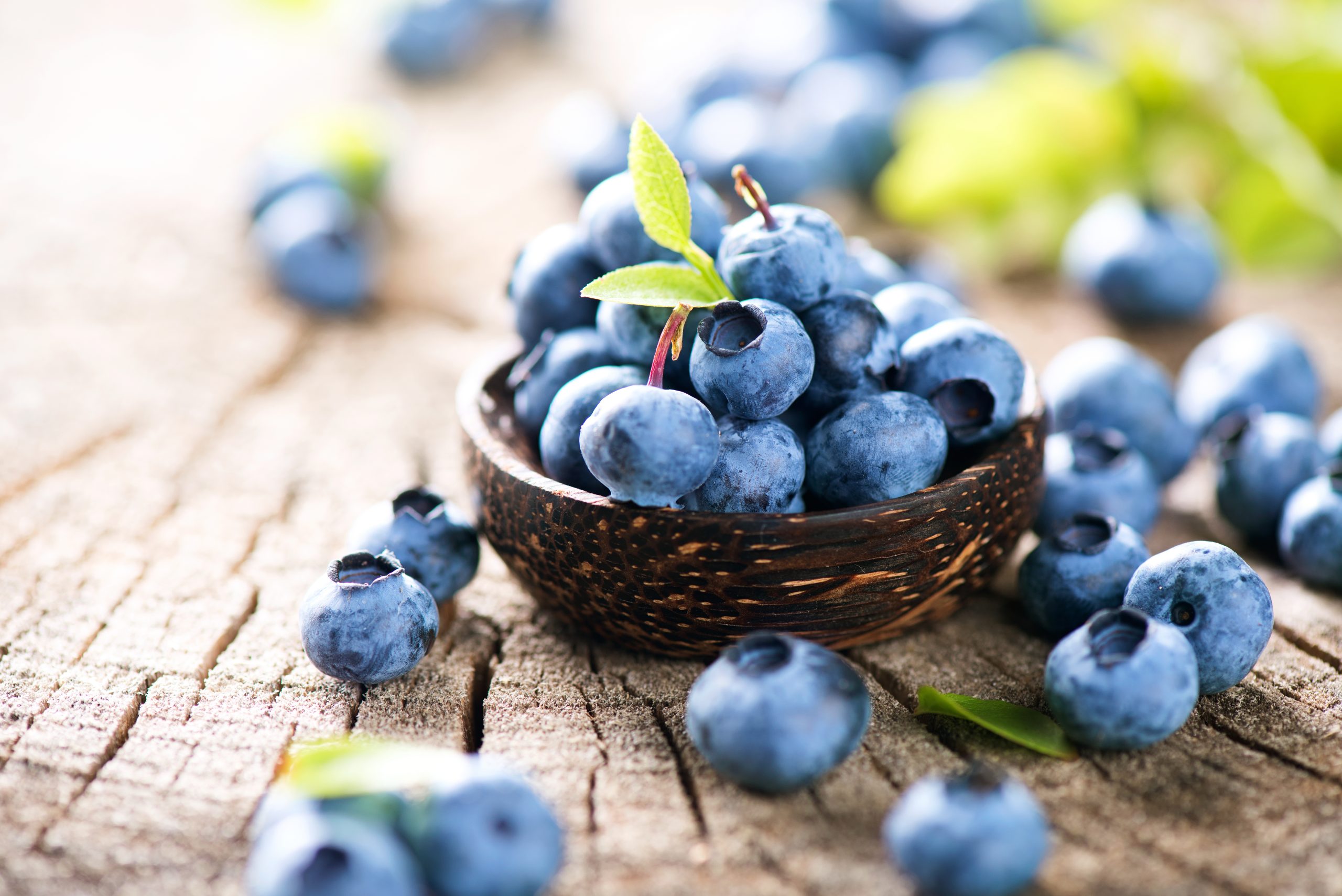Blueberries are small, round berries that are a favorite among people worldwide due to their sweet, tangy taste and numerous health benefits. Blueberries are grown in various regions across the globe, including North America, Europe, and Asia.
Table of Contents
What is a Blueberry?
Blueberries are a small, round, blue-colored, and nutrient-rich fruit that belong to the Vaccinium family, which includes other berries such as cranberries, bilberries, and huckleberries. The scientific name of blueberry is Vaccinium corymbosum.
Blueberries are also known by different names, including bilberries, whortleberries, huckleberries, and hurtleberries, depending on the region. They are native to North America and are grown in many parts of the world, including Europe, Asia, and South America.
They have a characteristic appearance with smooth, firm, and glossy dark blue skin. The fruit is usually about 5-16 millimeters (0.2-0.6 inches) in diameter, with a crown-shaped indentation at the top. The flesh inside is translucent, juicy, and contains tiny seeds. Blueberries are often sold fresh, but they are also available canned, dried, or frozen.
Blueberries have a sweet and slightly tart flavor, often described as fruity, with a subtle floral aroma. They have a refreshing taste and are low in calories, making them popular for snacks, desserts, and baked goods. Blueberries are also rich in antioxidants, vitamins, and minerals, making them a healthy addition to any diet.
Here are some common types of blueberry cultivars:
- Highbush Blueberries (Vaccinium corymbosum): These are the most common type of blueberries, and they grow on bushes that can reach heights of up to 12 feet. They are available in early and late-season varieties and are known for their large, sweet berries.
- Lowbush Blueberries (Vaccinium angustifolium): This variety is also known as wild blueberries and grows low to the ground, typically only reaching 1-2 feet. They are smaller than highbush blueberries but have a more intense flavor.
- Rabbiteye Blueberries: These are native to the southeastern United States and are named for their pinkish hue when they first emerge. They are known for their firm texture and high sugar content.

The History of Blueberries
Blueberries were first widely cultivated in the 1990s and early 2000s when research identified them as a superfood with numerous health benefits.
Blueberries are native to North America and were an important food source for Native Americans for thousands of years before being domesticated. They were a forage crop that could be dried, stored for winter, and incorporated into stews and other food combinations.
Native Americans also used the Vaccinium species for medicinal purposes. They passed their knowledge about berries, such as growth habits, to European immigrants, which influenced the development of modern blueberry varieties.
The story of modern blueberry cultivation starts with Elizabeth White, the daughter of a New Jersey cranberry farmer, who saw the potential for blueberries to be domesticated. She partnered with USDA botanist Frank Coville to lay the groundwork for modern blueberry varieties. Coville discovered that blueberries require very acidic soil conditions, which was previously not understood.
What Does a Blueberry Taste Like?
Blueberries have a sweet and slightly tart taste when eaten raw. The taste can be described as a combination of tangy and sweet flavors with a subtle earthy undertone. Blueberries become softer and juicier when cooked, and their flavor can become more concentrated and sweeter.
Cooking blueberries can also bring out their natural tartness, depending on the preparation method and added ingredients. Blueberries are commonly used in baked goods such as muffins, cakes, and pies, as well as in jams, sauces, and syrups.
How to Tell When Blueberries Are Ripe
Here’s how to tell when they are ripe and ready to eat:
| Color | The most reliable indicator of blueberry ripeness is its color. Ripe blueberries should have a deep blue or purple-black hue. If the berry is still red or greenish, it still needs some time to ripen fully. |
| Texture and Firmness | Ripe blueberries should feel plump and firm yet slightly tender to the touch. They should also have smooth skin free from wrinkles or soft spots. |
| Scent | Ripe blueberries should have a sweet and slightly floral aroma. They are likely overripe or spoiled if they smell sour or musty. |
| Taste | The best way to tell if a blueberry is ripe is to taste it. Ripe blueberries should be sweet and juicy with a slightly tart flavor. |
Note: When shopping for blueberries, here are some essential tips:
- Check the container carefully to ensure no damaged or squished berries. If there are any in the container, it could indicate that they have been mishandled or stored improperly.
- Choose berries that are uniform in size, as this can be an indication that they ripened at the same time and are of similar quality.
- Try to buy locally grown blueberries as they will likely be fresher and more flavorful.
Cooking with Blueberries
To prepare blueberries:
- Remove any stems or leaves attached to them.
- Rinse them thoroughly with cold water in a colander to remove dirt or debris.
- Pat them dry with a paper towel or kitchen towel.
Blueberries are a trendy and versatile fruit in various sweet and savory dishes. They are often used in baked goods like muffins, pancakes, and cakes, as well as in jams, syrups, and sauces. In traditional cuisines, blueberries are commonly found in American and European cooking.

Here are a few examples of dishes that use blueberries:
Blueberry Muffins: The combination of sweet, juicy blueberries with a light and fluffy muffin batter is truly unbeatable. You can also customize blueberry muffins with different toppings or add-ins, like streusel or lemon zest, to make them your own.
Blueberry White Chocolate Scones with Lemon Icing: This recipe is a unique twist on traditional scones. The combination of tart lemon icing, sweet white chocolate, and juicy blueberries is unexpected but delicious.
Blueberry Cheesecake: A dessert fit for royalty, or at the very least, anyone with a sweet tooth. The creamy cheesecake filling goes perfectly with the fruity blueberries that add a refreshing twist to the richness of the cheesecake.
Blueberry Cream Cheese: This versatile spread is fantastic on bagels, toast, or crackers. Blueberries add natural sweetness and flavor without sugar or artificial ingredients (just honey for this one). You can add different herbs or spices to the cream cheese to give it a savory or spicy twist.
How to Store Blueberries
The best way to store blueberries is to keep them in the fridge, where they can stay fresh for up to two weeks. To do this, place the blueberries in a shallow container, cover them with plastic wrap or a lid, and store them in the fridge. Avoid washing the blueberries until you are ready to eat them, as excess moisture can cause them to spoil faster.
If you plan to eat your blueberries within a day or two, you can store them on the counter at room temperature.
Blueberries can be frozen for long-term storage, allowing you to enjoy them even when they are out of season. Wash and dry blueberries thoroughly, then spread them on a baking sheet and freeze them for an hour. Once frozen, transfer them to a freezer-safe container or bag and store them in the freezer for up to six months.
Nutritional Benefits of Blueberries
Blueberries are a rich source of vitamins, minerals, and antioxidants, making them highly beneficial for your health. Blueberries are also one of the best natural sources of antioxidants, which protect your body from damage by free radicals that can harm other cells. These antioxidants can also help prevent the cholesterol in your blood from oxidizing, promoting cardiovascular health.
A half-cup serving of blueberries contains only 42 calories, one gram of protein, and less than one gram of fat. They are also a good source of dietary fiber, vitamin C, vitamin A, and manganese. High amounts of vitamin K are crucial for heart health (like reducing high blood pressure), blood clotting, and bone health.
Blueberries contain polyphenols and anthocyanin (a type of flavonoid) pigments responsible for their purple color. These have shown promise in reducing signs of aging, cancer risk, and DNA damage. Lastly, blueberries can improve insulin sensitivity in people with type 2 diabetes.
Where to Purchase Blueberries
Blueberries are widely available in most grocery stores, especially during the summer months when they are in season. You can find fresh blueberries in the produce section and frozen blueberries in the freezer section. You may also find dried blueberries in the snack aisle.
You can also find blueberries in the farmers’ markets during summer, typically from June to August. The advantage of purchasing blueberries at a farmers’ market is that you can usually find locally grown, organic ones.
Some specialty stores, such as Whole Foods or natural food stores, carry fresh blueberries and various blueberry products, such as jams, jellies, and dried blueberries.

